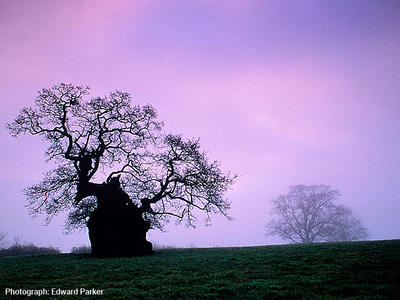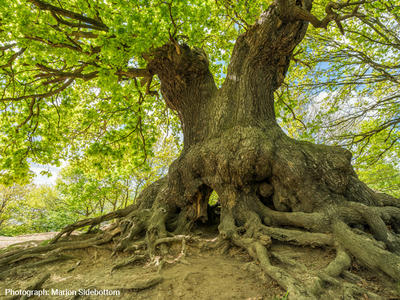PuRpOsE: uncovering the biodiversity of oak trees
The BBSRC funded PuRpOsE project has uncovered just how many species use our native oak trees.
A staggering 2300 species are known to be associated with oak, and that doesn’t include all of the fungi, and any of bacteria and other micro-organisms which use oak!
The 2300 species consist of 38 bird species, 229 bryophytes, 108 fungi, 1178 invertebrates, 716 lichens and 31 mammals. Of these species, 320 are only found on oak and a further 229 species are rarely found on species other than oak. These 549 species are the species identified as being most at risk if oak trees decline due pest, disease and/or climate change.
A staggering 2300 species are known to be associated with oak... not including all of the fungi or any of the bacteria and other micro-organisms!
The project assessed the suitability of 30 other tree species to support the biodiversity associated with oak.
The 30 tree species were selected as they are either currently already found in oak woods, and therefore might expand to fill canopy gaps created by the loss of oak, or are known to grow on site types that support oak. Ash was found to support the greatest number of oak-associated species. However, this tree is not currently a viable alternative to oak, as many ash trees are currently dying due to ash dieback.
Whilst the general message from the work is around diversifying woodlands to support oak-associated biodiversity using tree species other than oak, the results from the project can be tailored to specific sites.
All the information about oak-associated species and their use of other tree species is available in OakEcol (a database of oak associated biodiversity). Using site-specific species lists it is then possible to refine the list of potentially suitable tree species and identify management options.
Examples of this approach have been done for 30 oak woodland case studies across the UK, which are available, together with the OakEcol database and further information at www.hutton.ac.uk/oak-decline.
For further information contact Ruth Mitchell

Acknowledgements
The work was funded by Defra through the BBSRC grant Protecting Oak Ecosystems (PuRpOsE): BB/N022831/1 with additional support from the Forestry Commission England and the Scottish Government’s Rural and Environment Research and Analysis Directorate 2016-2021 strategic research programme.







